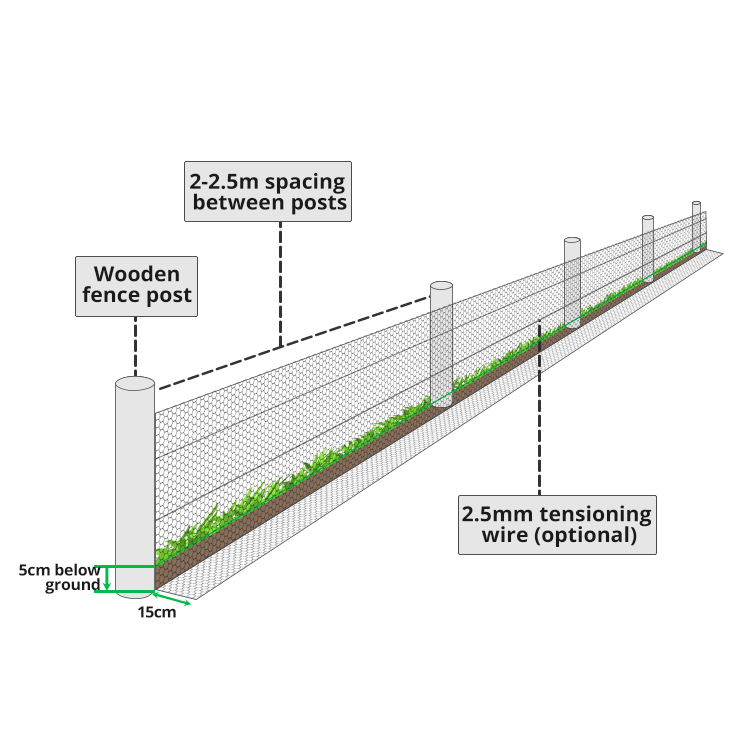Eradication of rabbits is almost futile if you don’t keep any neighbouring rabbits out, especially if neighbouring properties are not keeping on top of their rabbit control.
Since the 1880s, farmers have built rabbit fences using wire netting. Fencing had two distinct aims: to prevent rabbits spreading into new areas, and to contain them to improve the efficacy of control measures. Fencing is still an effective deterrent but left unchecked rabbits will still spread.
Divide and Conquer
Rabbits increased to alarming numbers on Brancepeth Station, east of Masterton, in the mid-1880s. Hugh Beetham, the owner, ring-fenced the 23,067-hectare property, then divided it into four using rabbit fences. The job involved about 112 kilometres of fencing. With his farm in rabbit-proof blocks, Beetham then used poison to get his rabbit problem under control.
Private rabbit fences
Several runholders put up a considerable amount of rabbit fencing on their properties. A notable example was on the Avondale run in northern Southland. Rowley and Hamilton took up the run after the previous leaseholder was forced off by rabbits, and ring-fenced the whole 10,521-hectare estate with rabbit netting. They were able to control the pests and prevent re-infestation. By 1886 they had increased their sheep flock from 7,000 to 18,000 – the number carried before rabbits became a nuisance.
Highlighting the need for more than one method of rabbit control, shooting programmes along already fenced areas can indicate areas of fence line that are in need of repair. Geotagging of rabbits once shot identified areas of the fence where the rabbits had gotten through, usually within 100m of where the rabbits were, driving an effective fence maintenance programme.
Effective fencing will slow the recovery of rabbit populations after control, or allow localised eradication to protect a high value resource. Deem’s 1914 fencing specifications for corner posts and mesh size are still appropriate today.
Small mesh netting with a diagonal measurement of approx 40 mm is recommended for clipping to existing or new fences to impede rabbit movement between areas. To rabbit-proof the fence the bottom of the netting should be buried approx 150 mm in the ground or turned onto the surface and packed with stones or earth to hold it down. This prevents rabbits from burrowing under the fence. It is essential that the netting is laid uphill and/or towards the expected rabbit pressure. Gates should be swung close to a concrete, railway iron, or board sill buried in the gateway so that rabbits cannot wriggle underneath. Fences should be checked and repairs made at least annually, or as necessary. Regular maintenance will reduce the need for periodic expensive rebuilding and keep the fence in a stock-proof condition.



